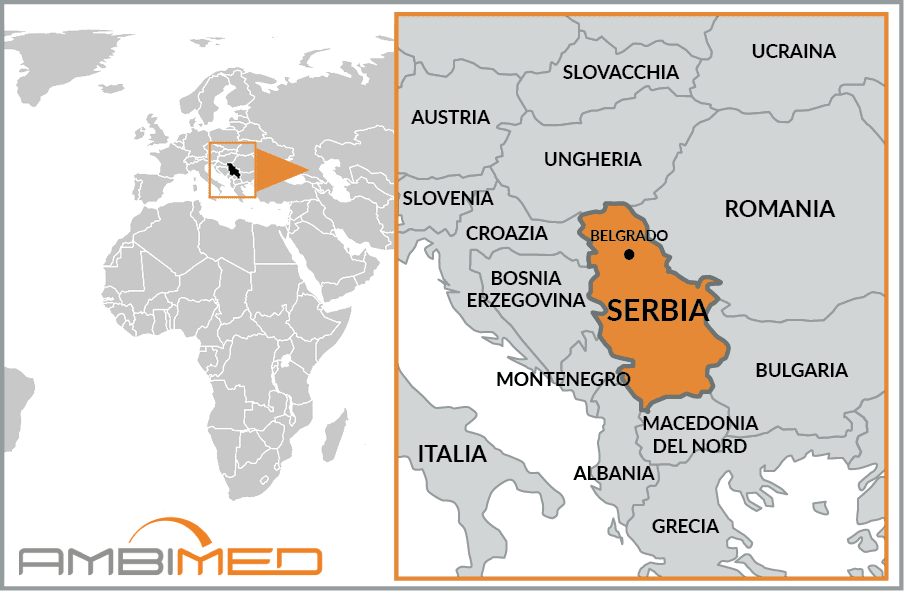Ambimed-Group
Travel Medicine
Business Travel Medicine
Easily manage your reservations and stay constantly updated on Ambimed services.

|
Country Name |
Republic of Serbia |
|
Continent |
Europe |
|
Surface area |
87,000 km2 |
|
Capital |
Belgrade |
|
Population |
6,926,705 |
|
Language |
Serbian |
|
Currency |
Serbian Dinar (RSD) |
|
Time zone |
+1hr compared to Italy |
|
Area code for Italy |
0039 |
|
Area code from Italy |
00381 |
Yellow fever vaccination is not required.
This viral disease is transmitted by the bite of infected ticks. Vaccination is recommended when staying in areas with a higher risk of infection. The risk decreases in the winter months.
Hepatitis A is usually transmitted by contaminated food and water, or close physical contact with an infected person, whereas Hepatitis B is transmitted by exposure to infected body fluids and blood.
Infection typically occurs through contact with the saliva of an infected animal, usually caused by bites, scratches or licks near open wounds or mucous membranes (e.g. mouth, nose, eyes). The most common vectors are dogs and bats, but cases of infection in other domestic animals have also been reported.
Caused by toxins released by the bacterium Clostridium tetani, the risk of tetanus infection is present throughout the country.
Diseases such as Crimean-Congo Haemorrhagic Fever, Leishmaniasis, and West Nile virus are present in Southern Europe. As these diseases are transmitted by insect bites and there are no vaccines, it is important to adopt careful behavioural and preventive measures.
The following vaccinations are strongly recommended as these diseases can be contracted anywhere in the world. Experts advise that you protect yourself and other travellers by making sure you are up-to-date with all of the recommended vaccinations. This will allow you to travel safely, while minimising the risk of exposure to infection.
The climate in Serbia is moderately continental, with cold winters and warm summers.
A key characteristic of the weather are the sudden temperature swings due to the collision of cold and warm fronts, the latter of which come from the Mediterranean and sometimes even Africa.
Rainfall varies in different areas, but across the country June is the month when it rains the most, also due to the frequent afternoon thunderstorms. Thunderstorms start in May and peak in June, gradually diminishing, but they never really end until the end of the summer. In fact, August and September are the months with the lowest rainfall. In winter, even in areas where there is very little precipitation, showers are still quite frequent, often resulting in light snowfall.